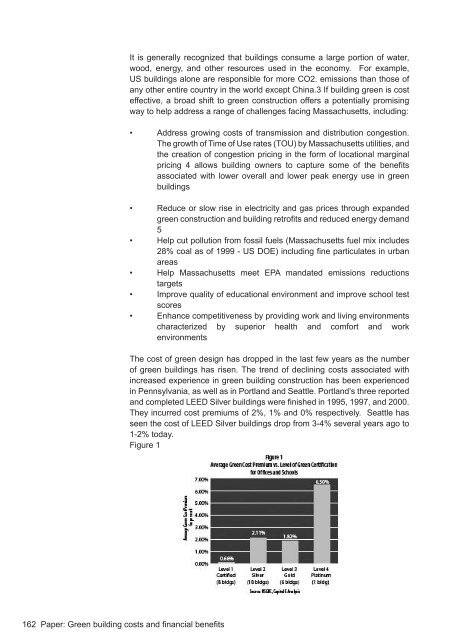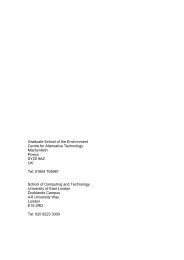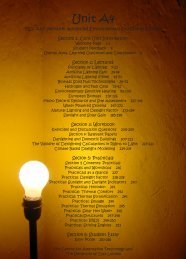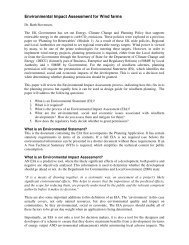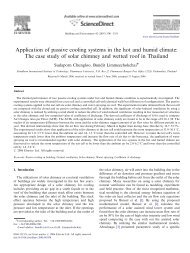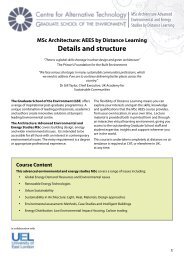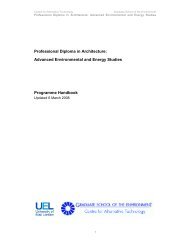Module B1 Study Book - the Graduate School of the Environment
Module B1 Study Book - the Graduate School of the Environment
Module B1 Study Book - the Graduate School of the Environment
You also want an ePaper? Increase the reach of your titles
YUMPU automatically turns print PDFs into web optimized ePapers that Google loves.
It is generally recognized that buildings consume a large portion <strong>of</strong> water,<br />
wood, energy, and o<strong>the</strong>r resources used in <strong>the</strong> economy. For example,<br />
US buildings alone are responsible for more CO2. emissions than those <strong>of</strong><br />
any o<strong>the</strong>r entire country in <strong>the</strong> world except China.3 If building green is cost<br />
effective, a broad shift to green construction <strong>of</strong>fers a potentially promising<br />
way to help address a range <strong>of</strong> challenges facing Massachusetts, including:<br />
•<br />
•<br />
•<br />
•<br />
•<br />
•<br />
Address growing costs <strong>of</strong> transmission and distribution congestion.<br />
The growth <strong>of</strong> Time <strong>of</strong> Use rates (TOU) by Massachusetts utilities, and<br />
<strong>the</strong> creation <strong>of</strong> congestion pricing in <strong>the</strong> form <strong>of</strong> locational marginal<br />
pricing 4 allows building owners to capture some <strong>of</strong> <strong>the</strong> benefits<br />
associated with lower overall and lower peak energy use in green<br />
buildings<br />
Reduce or slow rise in electricity and gas prices through expanded<br />
green construction and building retr<strong>of</strong>its and reduced energy demand<br />
5<br />
Help cut pollution from fossil fuels (Massachusetts fuel mix includes<br />
28% coal as <strong>of</strong> 1999 - US DOE) including fine particulates in urban<br />
areas<br />
Help Massachusetts meet EPA mandated emissions reductions<br />
targets<br />
Improve quality <strong>of</strong> educational environment and improve school test<br />
scores<br />
Enhance competitiveness by providing work and living environments<br />
characterized by superior health and comfort and work<br />
environments<br />
The cost <strong>of</strong> green design has dropped in <strong>the</strong> last few years as <strong>the</strong> number<br />
<strong>of</strong> green buildings has risen. The trend <strong>of</strong> declining costs associated with<br />
increased experience in green building construction has been experienced<br />
in Pennsylvania, as well as in Portland and Seattle. Portland’s three reported<br />
and completed LEED Silver buildings were finished in 1995, 1997, and 2000.<br />
They incurred cost premiums <strong>of</strong> 2%, 1% and 0% respectively. Seattle has<br />
seen <strong>the</strong> cost <strong>of</strong> LEED Silver buildings drop from 3-4% several years ago to<br />
1-2% today.<br />
Figure 1<br />
162 Paper: Green building costs and financial benefits


